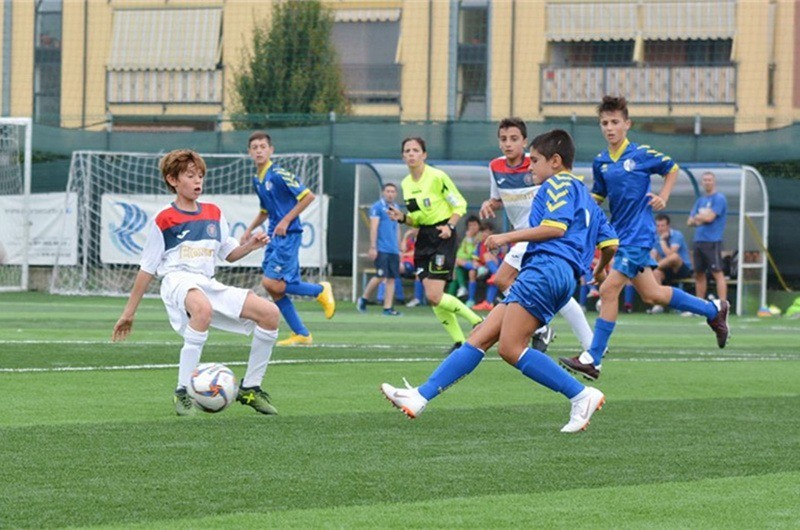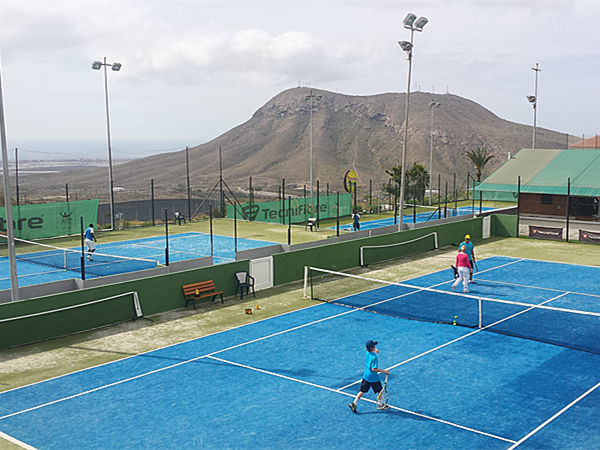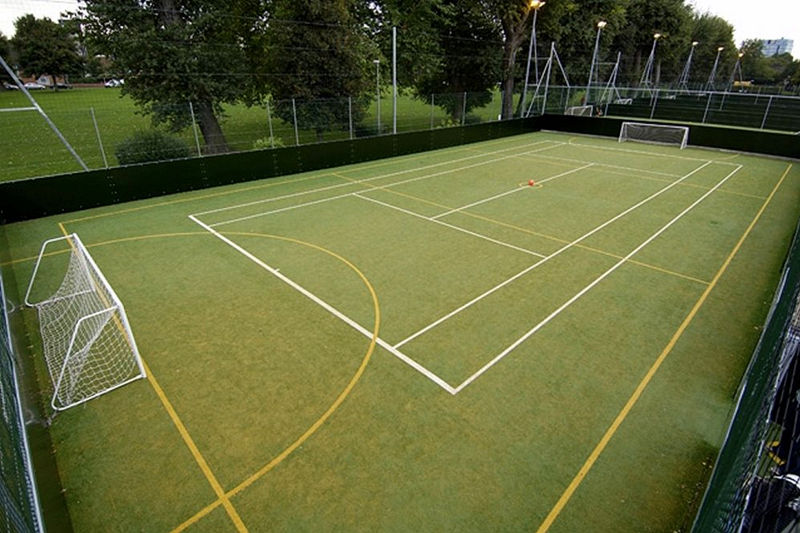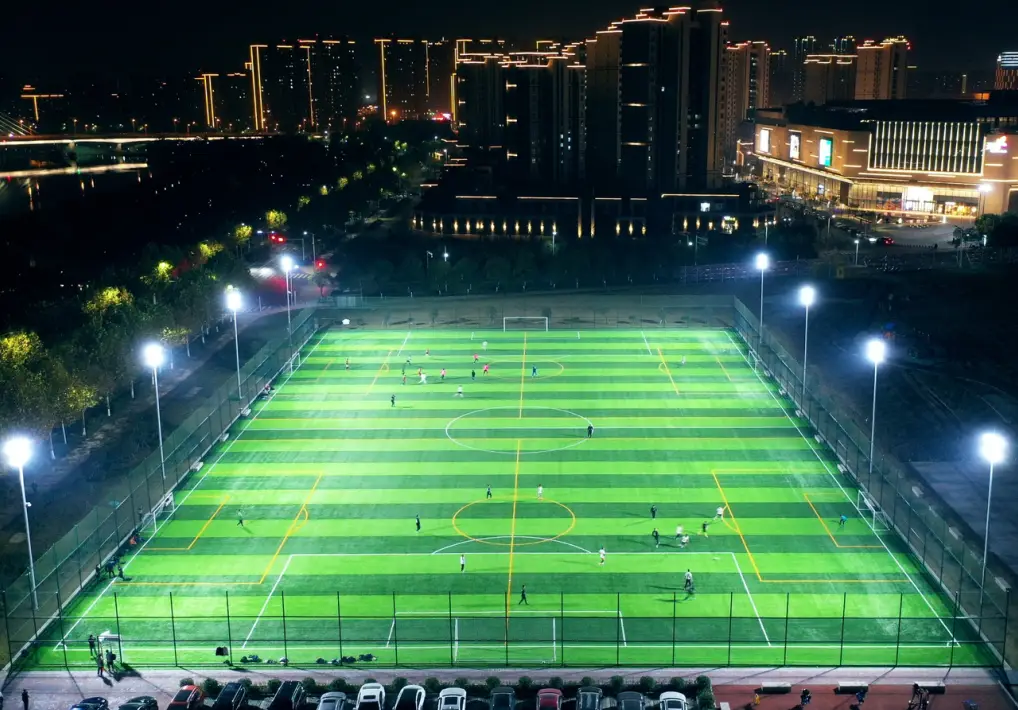Selecting the right lighting for sports fields is crucial to ensure players and spectators have optimal visibility and comfort during games. The quality of lighting can significantly affect the performance of players and the overall experience of viewers. Here are some comprehensive guidelines to help you choose the best lighting for your sports fields:
Table of Contents
1. Determine the Number and Layout of Fixtures
The number and arrangement of lighting fixtures should be based on the size and standards of the sports field. For instance, basketball and volleyball courts typically require fewer fixtures compared to football or tennis fields. Proper layout ensures that the playing area is well-lit and uniformly illuminated, which is essential for clear visibility without causing visual discomfort to players and spectators. This is particularly important for larger fields like those used for artificial grass football fields.
2. Consider Pole Height and Quantity
The height and quantity of light poles are critical factors in achieving uniform illumination. Taller poles can cover a larger area, reducing the number of fixtures needed and minimizing shadows on the field. However, the height should be balanced to avoid excessive glare and ensure adequate light reaches the playing field. Football fields and large multi-purpose fields often require higher poles, whereas smaller courts may use shorter poles.
3. Consider the Luminous Flux
Luminous flux, measured in lumens, indicates the amount of light emitted by a fixture. It is essential to select fixtures with sufficient luminous flux to ensure that the playing area is brightly lit. This will allow players to see clearly and react quickly during games, enhancing the overall quality of play on both artificial grass and natural lawn surfaces.
4. Evaluate Color Temperature and Color Rendering Index (CRI)
Color temperature, measured in Kelvin (K), describes the warmth or coolness of the light emitted by a fixture. A higher color temperature results in cooler (bluish) light, while a lower color temperature produces warmer (yellowish) light. The Color Rendering Index (CRI) measures a light source’s ability to reveal the true colors of objects. For sports fields, choosing lights with an appropriate color temperature and a high CRI ensures a comfortable playing environment and accurate color representation, which is critical for both players and fans.
5. Address Glare and Reflection
Glare and reflection can be significant issues in sports lighting, causing visual discomfort and reducing visibility. It is vital to select fixtures designed to minimize glare and reflection. Anti-glare features and strategic fixture placement can help mitigate these issues, ensuring a clear line of sight for both players and spectators. This is especially important in high-intensity sports and for fields with artificial grass, where surface reflections can be more pronounced.
6. Ensure Flexibility and Adaptability
Sports fields often host a variety of events, each with different lighting requirements. Choosing fixtures with adjustable brightness and color temperature can provide the flexibility needed to cater to different activities and events. This adaptability ensures that the lighting can be optimized for various conditions and preferences.
7. Consider Energy Efficiency and Lifespan
Energy efficiency and the lifespan of lighting fixtures are critical factors in reducing operational costs and maintenance efforts. High-efficiency LED lights consume less energy and have a longer lifespan compared to traditional lighting options. Investing in energy-efficient fixtures can lead to significant savings in the long run while also being environmentally friendly. This is particularly advantageous for large fields, such as those used for artificial grass football or multi-sport areas.
Conclusion
Selecting the right lighting for sports fields involves careful consideration of several factors, including the number and layout of fixtures, pole height and quantity, luminous flux, color temperature and CRI, glare and reflection control, adaptability, energy efficiency, and lifespan. By thoroughly evaluating these aspects, you can ensure that your sports field is equipped with lighting that provides a bright, comfortable, and interference-free environment, enhancing the overall experience for players and spectators alike.
Sporting lighting terminology and parameters can be overwhelming and confusing. However, you don’t need to have professional lighting knowledge or experience to buy the right sports lighting. All you need to do is find a professional sports lighting supplier. Team Sports Industry Limited collaborates with expert sports lighting manufacturers to provide tailored lighting solutions based on your needs and budget. We offer one-stop solutions, including but not limited to artificial grass, sport LED lighting, sport field fence, and more.




